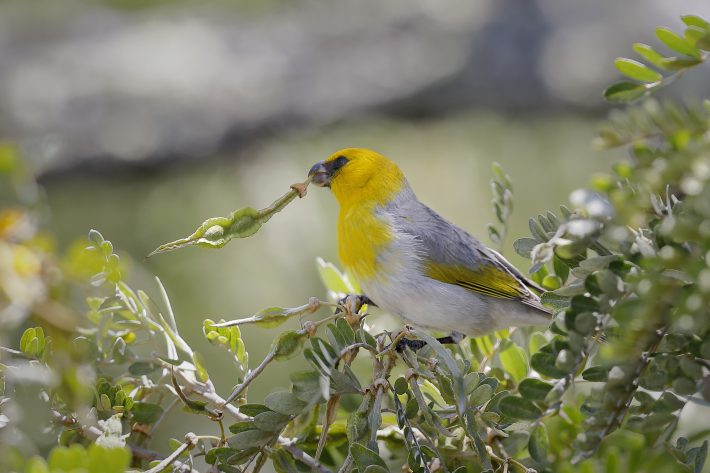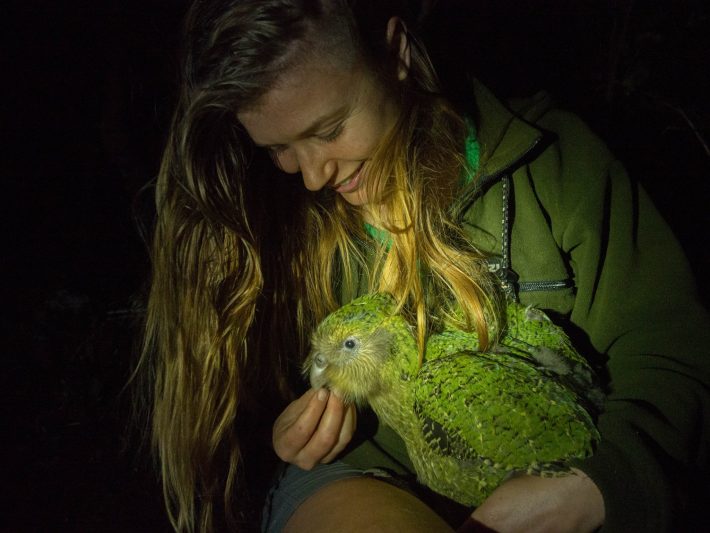The forgotten fauna: introduced seed predators are no surrogate for extinct seed-eating animals on islands
Manaaki Whenua – Landcare Research press release.
A new study led by Dr Jo Carpenter, and published in Functional Ecology, has shown that it’s not just the loss of mutually beneficial species like pollinators or seed disperses that have a severe impact on island ecology, the loss of “negative” interactions such as destroying seeds or parasitism is also important.

Whenever humans have reached islands, animal species on those islands have been exposed to a raft of new pressures, such as habitat loss and invasive species. As a result, many animals have gone extinct – the dodo of Mauritius being one the most well-known examples.
Less well-known is that the extinction of these animals also means the extinction of the interactions they had with other plants and animals, like dispersing seeds or pollinating flowers. The loss of these positive, mutually beneficial interactions concern conservation biologists because they can have cascading and lasting impacts for ecosystems.
A new study led by Dr Jo Carpenter, a post-doctoral researcher at Manaaki Whenua – Landcare Research, has shown that it’s not just the loss of mutually beneficial species interactions that we should be worried about, but also the loss of “negative” interactions such as destroying seeds or parasitism.
“It’s easy to understand why we should be worried when pollinators or seed dispersers have gone extinct,” says Dr Carpenter, “but ecologists tend to be less concerned about losing so-called ‘negative’ species interactions such as seed predation. These are important functions in island ecosystems too, yet we know very little about them”.
Dr Carpenter and her co-authors labelled the extinct native species that destroy seeds the “forgotten fauna” because the role these species played in the past has been neglected by most researchers. Her team examined the role of lost seed predators on three iconic island groups: New Zealand, Hawaiʻi, and the Mascarenes, by surveying all the native vertebrate animals that would have destroyed seeds on those islands. The islands originally harboured unique communities of seed eating birds, ranging from jewel-coloured finches in Hawaii to huge flightless moa in New Zealand. The gizzards of moa contained up to 5 kg of stones to grind up their food, while other birds had specially adapted beaks to crack open hard seeds.

“Sadly, between 63 and 89% of native vertebrate seed predators are now extinct on these islands” says co-author Dr Janet Wilmshurst, also from Manaaki Whenua. “These islands now feature new, introduced seed predators such as rats, mice, pigs, and introduced birds. We studied whether the new introduced seed predators could step in for some of the extinct animals, and replace the jobs they used to do in the ecosystem.”
Unfortunately, the study showed this was unlikely. The researchers assessed the traits of the native and introduced seed predators, to see whether they were functionally similar. In most cases, the new seed predators were quite different to the original seed predators, and therefore may be introducing entirely new impacts for plants.
“These introduced seed predators could be gradually restructuring forest communities by eating the seeds from only preferred plants,” says co-author Professor Don Drake, from the University of Hawaii. “For example, introduced rats have altered plant communities across several archipelagos by destroying the seeds and seedlings of preferred species such as palms. Of course, the original native seed predators were probably doing this too. But now it’s likely to be happening to different plants, in different ways, and with different intensities of pressure.”
The researchers hope that the study will help conservation biologists realise the importance of native species that have different kinds of ecosystem roles, as well as the more obvious mutualistic species. “Often, conservationists aim to restore a complete ecosystem so that all the different pieces are present and functioning again,” says co-author Dr Kim McConkey from the University of Nottingham. “To do that properly, we need to restore all the roles that species play, like parasitism, herbivory, and predation – not just the good stuff.”
You can read the article for free (for a limited time) here:
https://besjournals.onlinelibrary.wiley.com/doi/full/10.1111/1365-2435.13629
Media contact:
Jo Carpenter
+64 27 747 8778
carpenterj@landcareresearch.co.nz
Like what we stand for?
Support our mission and help develop the next generation of ecologists by donating to the British Ecological Society.